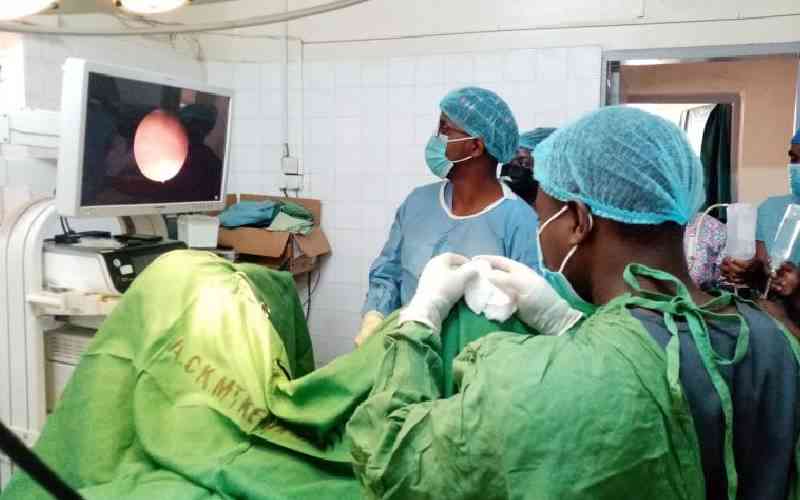
Gynaecological conditions are a major contributor to morbidity and mortality worldwide, with the greatest burden borne by women in resource-limited countries where access to specialised services remains a challenge.
And while great progress has been achieved in reducing maternal mortality worldwide, thanks largely to the Millenium and Sustainable Development Goals (MDG & SDG) initiatives, deaths due to gynaecological conditions such as cervical cancer have continued to rise unchecked, driven largely by a global epidemic of non-communicable diseases (NCDs). Overall, 4.5 per cent of the global burden of disease has gynaecological origins.
Surgical services are an essential component of health systems. Until recently, however, access to surgical interventions has been a neglected global issue despite up to 30 per cent of the world’s disease burden requiring surgical intervention. Almost 2 billion people in the world have no access to needed interventions, and of the 234 million surgeries conducted worldwide each year, only 3.5 per cent are conducted in low-income countries.
Notably, over the last few decades, technological and medical advancement has seen the introduction of a multitude of new operative techniques that have transformed the scope of modern surgical practice. One of these newer techniques is laparoscopy, otherwise referred to as keyhole surgery.
It is a form of minimally invasive surgery which is characterised by nominal cutting and the application of video technology in surgical operations. However, even while being a potential game changer in the field of gynecology, not many people outside the medical field are aware of this surgical option.
In the management of gynecological disorders, laparoscopic surgery involves the insertion of a laparoscope (a device with a video camera and lighting) into the pelvic area to conduct diagnosis and/or treatment.
Laparoscopic procedures, which incorporate devices with tissue magnification capabilities, enable surgeons a better view of the area of interest and promote better positioning of instruments to perform the necessary procedures with greater precision. Gynaecological laparoscopy is used to diagnose and treat a variety of conditions, including endometriosis, fibroids, ovarian cysts, ectopic pregnancies, tubal ligation and removal of the uterus.
The benefits of laparoscopic surgery are numerous. Firstly, smaller incisions mean less pain and scarring, less blood loss, and a reduced risk of infection. Secondly, laparoscopy allows for better visualisation of the surgical site, leading to greater accuracy during procedures. Thirdly, recovery times are shorter, meaning patients can return to their normal activities sooner.
Finally, the cosmetic benefits of laparoscopy are not to be overlooked. With smaller incisions, patients are left with less noticeable scars, which can be a significant factor in the decision-making process. It’s no surprise, therefore, that in many instances, laparoscopy has replaced traditional open surgery, which involves larger incisions (and scars), longer recovery times, and a higher risk of complications.
In the Kenyan context, where resources are limited and the health system is beset by a myriad of challenges, there is a strong case for the expansion of gynecological laparoscopic services to county facilities. Apart from the morbidity gains alluded to earlier, the economic and systemic advantages resulting from this minimally invasive procedure are impressive.
While initial set-up costs could be a bit steep, there is not only less spending on antibiotics, analgesics and other supplies in the long run, but shorter recovery times also means that bed space can be freed up faster for other patients in the congested facilities. Furthermore, in the setting of scant diagnostic services that characterise many county facilities, diagnostic laparoscopy could be an effective remedy.
These gains can, however, only be realised through concerted efforts of county policymakers to invest in the requisite equipment as well as the necessary skill development initiatives for health workers.

